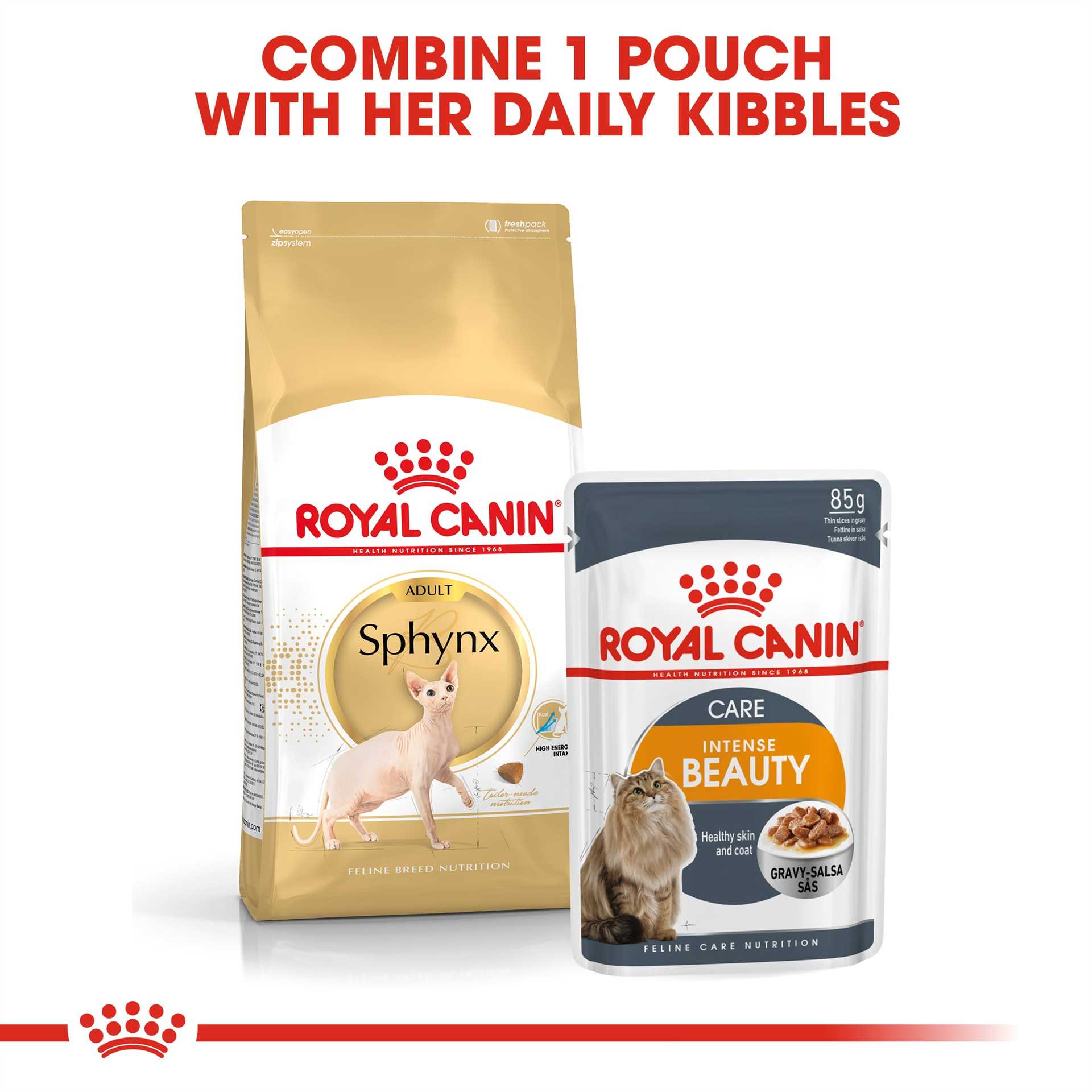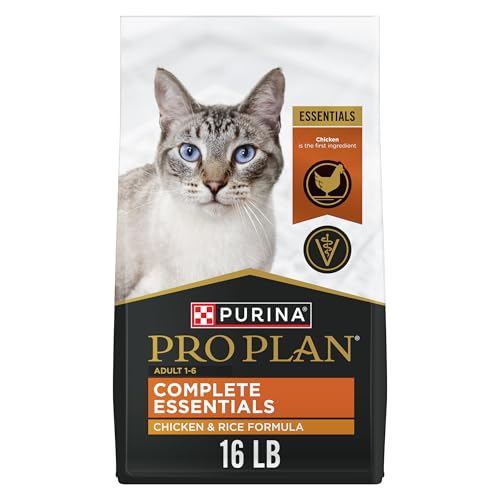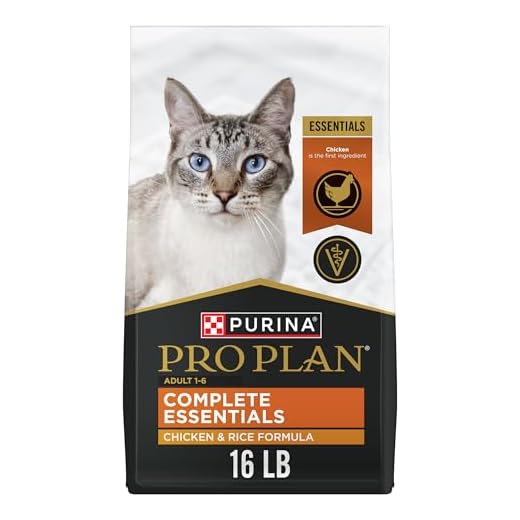




If you’re looking for high-quality kibble that meets the unique needs of your hairless feline, I highly recommend considering options that prioritize protein, healthy fats, and essential vitamins. This article discusses various premium options that cater specifically to the dietary requirements of Sphynx companions, ensuring they thrive in their playful and active lifestyles.
Within this piece, you’ll discover a selection of the finest brands that offer nourishing meals tailored to support skin health, muscle development, and overall well-being. Each option has been evaluated based on ingredients, nutritional content, and the specific needs of Sphynx breeds.
This guide is beneficial for pet owners seeking the best nutrition for their beloved companions, helping you make informed decisions that enhance your pet’s health and happiness. From ingredient breakdowns to feeding tips, this article equips you with all you need to keep your Sphynx satisfied and healthy.
Best Nutritional Options for Your Hairless Companion
Choosing the right nutrition for your feline friend without fur is crucial for their health and well-being. Look for products that prioritize high-quality protein sources, as these are essential for maintaining muscle mass and overall vitality. Additionally, ensure that the selected diet includes essential fatty acids, which contribute to skin health and a shiny coat, even in hairless breeds.
Consider formulations that are specifically designed to meet the unique needs of this breed. These options often contain higher levels of calories and protein to support their fast metabolism. Always check the ingredient list for natural components and avoid fillers like corn and soy, which provide little nutritional value.
Key Nutritional Components
When evaluating various options, keep an eye on the following components:
- Protein Content: Look for a minimum of 30% protein derived from high-quality animal sources.
- Fat Levels: Healthy fats should make up around 15-20% of the diet, focusing on omega-3 and omega-6 fatty acids.
- Fiber: A moderate amount of fiber can aid digestion, ideally around 3-5%.
Additionally, hydration is important. Even though kibble is not a wet option, make sure your pet has constant access to fresh water to prevent dehydration.
Transitioning to New Diets
When introducing new nutrition, do so gradually to avoid digestive upset. Mix small amounts of the new product with their current meals over a week, increasing the proportion of the new option each day. Monitor their reaction and adjust accordingly.
Consult your veterinarian for personalized recommendations based on health status, age, and activity level, ensuring a balanced approach to your companion’s dietary needs.
Understanding Nutritional Needs of Sphynx Cats
Providing a balanced diet for hairless felines requires attention to specific nutritional requirements. These unique companions have a higher metabolism compared to other breeds, necessitating a diet rich in protein and healthy fats.
Quality protein sources should be prioritized, as they support muscle development and overall health. Look for animal-based proteins, which are more easily digestible for these pets. Additionally, incorporating omega fatty acids can help maintain skin health and support the cat’s immune system.
Key Nutritional Components
- Proteins: Essential for growth and maintenance. Aim for a protein content of at least 30% in the daily intake.
- Fats: Important for energy, with a recommended fat content of around 15-25%. Look for sources like fish oil or chicken fat.
- Carbohydrates: Should be included in moderation, providing energy and fiber. Whole grains and vegetables are suitable options.
- Vitamins and Minerals: Ensure the diet includes essential vitamins such as A, D, and E, along with minerals like calcium and phosphorus to support bone health.
Hydration is also critical. While many felines may not drink enough water, incorporating a balanced intake of moisture-rich ingredients can promote hydration. Monitor the cat’s weight regularly, as fluctuations can indicate dietary adjustments are needed.
Lastly, consult with a veterinarian to tailor a diet that meets the individual needs of your pet. Regular check-ups will help optimize dietary choices and ensure your companion remains healthy and active.
Brands Offering Quality Nourishment for Hairless Breeds
When selecting an appropriate diet for hairless companions, consider those that prioritize high protein content and essential fatty acids, which are crucial for maintaining skin health and energy levels. Nutritional options rich in animal-based ingredients can contribute to overall vitality and well-being.
Several manufacturers are known for their commitment to quality, ensuring that formulations are tailored to meet the unique needs of these unique pets. Look for options that include a balanced blend of vitamins and minerals to support immune function and promote healthy skin.
Key Features to Consider
- Protein Sources: High-quality animal proteins should be the primary ingredient to support muscle maintenance and growth.
- Fatty Acids: Omega-3 and omega-6 fatty acids are essential for skin and coat health, particularly important for hairless breeds.
- Digestibility: Ingredients that are easily digestible can enhance nutrient absorption and reduce gastrointestinal issues.
- Grain-Free Options: Many hairless varieties thrive on grain-free diets that minimize allergens and promote better digestion.
- Added Supplements: Look for formulations that include probiotics, antioxidants, and vitamins to support overall health.
Choosing the right nourishment requires careful consideration of the specific needs of hairless companions. Evaluating the ingredients and nutritional profiles of various brands can lead to finding a suitable option that enhances their health and happiness.
Ingredients to Look for in Sphynx Cat Dry Food
Choosing the right nutrition for your feline companion involves understanding the ingredients that can support their unique needs. Sphynx cats have specific dietary requirements that should be met to ensure optimal health. High-quality protein sources should be prioritized, as they play a significant role in muscle maintenance and overall vitality.
Look for animal-based proteins such as chicken, turkey, or fish in the ingredient list. These ingredients should be listed as the primary component to provide essential amino acids. Additionally, the presence of healthy fats, like omega-3 and omega-6 fatty acids, is important for skin and coat health, particularly for Sphynx cats, who may experience skin sensitivities.
Key Components to Consider
While evaluating various options, consider the following components:
- Protein Content: Ensure that the dry kibble has a high percentage of animal protein. A minimum of 30-40% is often recommended.
- Fat Sources: Include sources like chicken fat or fish oil, which aid in skin health and provide energy.
- Carbohydrates: Look for complex carbohydrates from sources like sweet potatoes or brown rice, which are easier to digest.
- Vitamins and Minerals: Ensure the presence of essential vitamins such as A, E, and B vitamins, along with minerals like calcium and phosphorus for bone health.
- Probiotics: Beneficial bacteria can promote digestive health, which is important for overall well-being.
Pay attention to the absence of fillers like corn, wheat, and soy, as these can lead to allergies or digestive issues. Always check for any artificial additives, preservatives, or colors that may not be beneficial for your pet’s health.
Ultimately, focusing on the quality and source of ingredients will help in selecting a suitable meal for your feline friend, supporting their unique physiological needs.
Common Allergens and Sensitivities in Sphynx Cats
Sphynx individuals often experience specific dietary sensitivities and allergies that can lead to various health issues. Identifying these allergens is crucial for maintaining their well-being. Common triggers include certain proteins, grains, and additives found in many commercial pet products.
One prominent allergen is chicken, which is a frequent ingredient in many formulations. Some felines may exhibit adverse reactions to beef as well. Grains such as corn and wheat can also provoke sensitivities, causing gastrointestinal distress and skin irritations. It is advisable to monitor for any changes in behavior or health after introducing new nutrition.
Potential Symptoms of Allergic Reactions
Recognizing signs of food allergies is vital for early intervention. Common symptoms may include:
- Itchy or inflamed skin
- Gastrointestinal upset, such as vomiting or diarrhea
- Ear infections
- Excessive grooming or hair loss
If any of these signs are observed, consulting a veterinarian is recommended to determine the appropriate course of action, which may include an elimination diet to identify specific triggers.
Considerations for Selecting Nutrition
When choosing nutrition for a Sphynx, consider options that are free from common allergens. Look for products that utilize alternative protein sources such as duck or lamb. Additionally, grain-free options can help reduce the risk of sensitivities. Always prioritize high-quality ingredients and consult with a veterinarian to ensure the selected diet meets the specific health needs of the individual.
Feeding Guidelines and Portion Control for Sphynx Cats
Provide a balanced and nutritious diet tailored to your feline companion’s unique needs. It’s essential to understand the specific caloric requirements based on age, weight, and activity level to maintain optimal health.
Adjust portion sizes according to the manufacturer’s recommendations and your pet’s individual requirements. Regular monitoring of your cat’s weight will help you make necessary adjustments to their diet.
Portion Control Recommendations
- Adult cats typically require 20 calories per pound of body weight daily.
- Adjust portions based on activity level: more active cats may need additional calories.
- Consult your veterinarian for specific dietary needs and adjustments.
Feeding Schedule
- Split daily portions into two or three meals to promote better digestion.
- Establish a consistent feeding routine to help regulate appetite.
- Avoid free feeding to prevent overeating and obesity.
Monitoring Health
Regularly check your pet’s weight and body condition. Adjust portions as needed to ensure a healthy weight.
By following these guidelines, you can help your feline thrive and maintain a healthy lifestyle.
Best dry food for sphynx cats
Features
| Part Number | 038100131546 |
| Model | 13154 |
| Warranty | Purina guarantees outstanding quality and taste. If for any reason you’re not satisfied, simply let Purina know why. Please contact Purina directly at (800) 778-7462 within 60 days of date on receipt for assistance. Or, feel free to mail your original purchase receipt with the price circled, a brief explanation of why you were dissatisfied with our products, the “Best If Used By” date box from the package, along with your name and street address (P.O. Box not accepted) to: Purina, Consumer Services, PO Box 340, Neenah WI 54957 |
| Release Date | 2022-02-24T00:00:01Z |
| Size | 16 Pound (Pack of 1) |
| Publication Date | 2011-12-21T00:00:01Z |
Features
| Part Number | 70 |
| Model | 70 |
| Warranty | If you have a question that needs immediate attention, please call (800) 919-2833. |
| Color | Brown |
| Size | 12 Pound (Pack of 1) |
Features
| Part Number | 175205 |
| Model | 542507 |
| Warranty | 100% SATISFACTION GUARANTEED If you are not completely satisfied with this product, Royal Canin will replace the product or refund your purchase price. Contact us for more details. Store this product in a cool, dry place. |
| Size | 7 Pound (Pack of 1) |
Features
| Part Number | 017800182027 |
| Model | 00017800182027 |
| Warranty | Purina guarantees outstanding quality and taste. If for any reason you’re not satisfied, simply let Purina know why. Please contact Purina directly at (800) 778-7462 within 60 days of date on receipt for assistance. Or, feel free to mail your original purchase receipt with the price circled, a brief explanation of why you were dissatisfied with our products, the “Best If Used By” date box from the package, along with your name and street address (P.O. Box not accepted) to: Purina, Consumer Services, PO Box 340, Neenah WI 54957 |
| Release Date | 2018-07-09T00:00:01Z |
| Size | 16 Pound (Pack of 1) |
Features
| Part Number | 017800147347 |
| Model | 00017800147347 |
| Color | Other |
| Release Date | 2023-01-23T00:00:01Z |
| Size | 22 Pound (Pack of 1) |
Features
| Part Number | 800286 |
| Model | 70 |
| Warranty | If you have a question that needs immediate attention, please call (800) 919-2833. |
| Color | Brown |
| Size | 11 Pound (Pack of 1) |
Video:
FAQ:
What are the key nutritional needs of Sphynx cats that dry food should meet?
Sphynx cats have specific nutritional requirements due to their unique physiology. They need a high protein content to support their active metabolism and muscle mass. Look for dry foods that list high-quality meat as the first ingredient, such as chicken or fish. Additionally, fats are important for maintaining their skin and coat health, so a good balance of omega fatty acids is beneficial. Carbohydrates should come from digestible sources to provide energy without causing digestive issues. Lastly, vitamins and minerals like taurine, which is crucial for heart health, should be included to ensure overall well-being.
Are there specific brands of dry food recommended for Sphynx cats?
Several brands are well-regarded for their quality and formulation tailored to the needs of Sphynx cats. Royal Canin offers a breed-specific formula that caters to the nutritional needs of Sphynx cats, providing a balanced diet with essential nutrients. Hill’s Science Diet is another option, with recipes designed for sensitive skin and digestive health. Wellness CORE and Orijen are also popular choices, known for their high protein content and natural ingredients. It’s always best to consult with your veterinarian before choosing a brand to ensure it fits your cat’s individual health needs.
How can I transition my Sphynx cat to a new dry food?
Transitioning your Sphynx cat to a new dry food should be done gradually to avoid digestive upset. Start by mixing a small amount of the new food with the current food your cat is eating. A common approach is to use a ratio of 75% old food to 25% new food for the first few days. Gradually increase the proportion of new food over a week or so, monitoring your cat for any signs of digestive distress, such as vomiting or diarrhea. If any issues arise, slow down the transition process. Ensuring your cat has access to fresh water during this change is also important.










